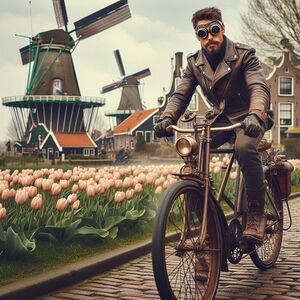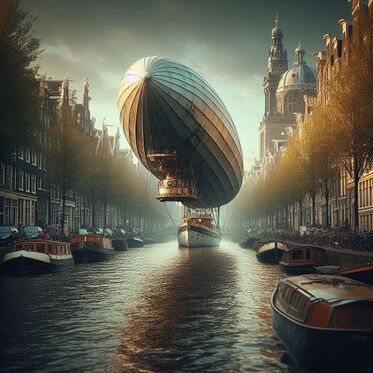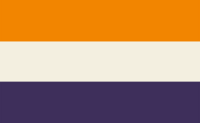De Republiek der Zeven Vrije Botaviaanse Staten: Difference between revisions
(Created page with "'''De Republiek der Zeven Vrije Bataviaanse Staten''' (English: ''The Republic of the Seven Free Botavian States'') is an industrialized maritime nation, situated in ... . Formed from seven autonomous states, each known for its unique industries and cultures, the republic represents a blend of 20th-century technology and innovation with a strong tradition of independence and craftsmanship. Known for its sprawling rail networks, advanced canal systems, and a powerful navy...") |
|||
| (3 intermediate revisions by the same user not shown) | |||
| Line 1: | Line 1: | ||
'''De Republiek der Zeven Vrije Bataviaanse Staten''' (English: ''The Republic of the Seven Free Botavian States'') is an industrialized maritime nation, situated in ... . Formed from seven autonomous states, each known for its unique industries and cultures, the republic represents a blend of 20th-century technology and innovation with a strong tradition of independence and craftsmanship. Known for its sprawling rail networks, advanced canal systems, and a powerful navy, the republic thrives as a global player in trade, engineering, and environmental management. The administrative capital is '' | '''De Republiek der Zeven Vrije Bataviaanse Staten''' (English: ''The Republic of the Seven Free Botavian States'') is an industrialized maritime nation, situated in ... . Formed from seven autonomous states, each known for its unique industries and cultures, the republic represents a blend of 20th-century technology and innovation with a strong tradition of independence and craftsmanship. Known for its sprawling rail networks, advanced canal systems, and a powerful navy, the republic thrives as a global player in trade, engineering, and environmental management. The administrative capital is ''Donderstad'' in the state of '''Veenland'''. | ||
{{Infobox country | conventional_long_name = The Republic of the Seven Free Botavian States | native_name = ''De Republiek der Zeven Vrije Botaviaanse Staten'' (Botavian) | common_name = Sokhanistan | status = | image_flag = [[File:Botavian_Flag.png|200px]] | flag_type = [[Flag of Botavia (Pacifica)|Flag of Botavia]] | alt_flag = | flag_border = | image_flag2 = | alt_flag2 = | flag2_border = | image_coat = | alt_coat = | symbol_type = | national_motto = | englishmotto = | national_anthem = | royal_anthem = | other_symbol_type = | other_symbol = | image_map = | loctext = | alt_map = | map_caption = | image_map2 = | alt_map2 = | map_caption2 = | capital = | coordinates = | largest_city = | official_languages = | national_languages = | regional_languages = | languages_type = | languages = | languages_sub = | languages2_type = | languages2 = | languages2_sub = | ethnic_groups = | ethnic_groups_year = | ethnic_groups_ref = | religion = | religion_year = | religion_ref = | demonym = | government_type = | leader_title1 = | leader_title2 = | leader_title3 = | leader_title4 = | leader_title5 = | legislature = | upper_house = | lower_house = | sovereignty_type = | sovereignty_note = | established_event1 = Unification | established_date1 = | established_event2 = | established_date2 = | established_event3 = | established_date3 = | established_event13 = | established_date13 = | area_rank = | area = | area_km2 = | area_sq_mi = | area_footnote = | percent_water = | area_label = Total | area_label2 = | area_data2 = | population_estimate = | population_estimate_rank = | population_estimate_year = | population_census = | population_census_year = | population_density_km2 = | population_density_sq_mi = | population_density_rank = | GDP_PPP = | GDP_PPP_rank = | GDP_PPP_year = | GDP_PPP_per_capita = | GDP_PPP_per_capita_rank = | GDP_nominal = | GDP_nominal_rank = | GDP_nominal_year = | GDP_nominal_per_capita = | GDP_nominal_per_capita_rank = | Gini = | Gini_ref = | Gini_rank = | Gini_year = | HDI_year = | HDI = | HDI_change = | HDI_rank = | HDI_ref = | currency = Vlorijn | currency_code = | time_zone = UTC | utc_offset = | time_zone_DST = | utc_offset_DST = | DST_note = | antipodes = | date_format = dd/mm/yyyy | drives_on = Right | cctld = .zb | iso3166code = ZVB | calling_code = | patron_saint = | image_map3 = | alt_map3 = | footnote_a = }} | |||
== History == | == History == | ||
| Line 5: | Line 7: | ||
== Government and Politics == | == Government and Politics == | ||
De Republiek der Zeven Vrije Bataviaanse Staten operates as a confederal republic, with power divided between a central government and the seven states: | De Republiek der Zeven Vrije Bataviaanse Staten operates as a confederal republic, with power divided between a central government and the seven states:[[File:Dieseldutch.jpg|thumb|Donderstad is noted for its many bike lanes and floral gardens]] | ||
{| class="wikitable" | {| class="wikitable" | ||
|+ | |+ | ||
|'''Vrije Staat''' | |'''Vrije Staat''' | ||
|'''Capital City Name''' | |'''Capital City Name''' | ||
|Other Notable City | |||
|'''Note''' | |'''Note''' | ||
|- | |- | ||
| | |Veenland | ||
| | |Donderstad | ||
|Administrative Capital | |Ijzerwijk, Schoringen | ||
|Administrative & Cultural Capital | |||
|- | |- | ||
|Kolenland | |Kolenland | ||
| | |Zilverdam | ||
| | |Stalendam | ||
|Financial & Industrial Hub | |||
|- | |- | ||
|Meerland | |Meerland | ||
| | |Rookmeerhaven | ||
|Maritime Hub | |Vuurtuin | ||
|Naval & Maritime Hub | |||
|- | |- | ||
|Fresland/Freslân | |Fresland/Freslân | ||
|Koperkade/Koperdyk | |Koperkade/Koperdyk | ||
|Stellinga | |||
|Semi-Autonomous Region | |Semi-Autonomous Region | ||
|- | |- | ||
|Polderveld | |Polderveld | ||
|Glastoren | |Glastoren | ||
|Wouda | |||
|Agricultural Hub | |Agricultural Hub | ||
|- | |- | ||
| | |Zoutwoud | ||
|Kardam | |Den Kardam | ||
| | | | ||
|Judicial Capital | |||
|- | |- | ||
| | |Outracht | ||
| | |Outracht | ||
| | |||
|Legislative Capital | |Legislative Capital | ||
|} | |} | ||
The ''Raad der Staten'' (Council of the States) serves as the | The republic’s governance is designed to honor the autonomy of each state while maintaining a unified national identity. The '''Raad der Staten''' (Council of the States) serves as the primary legislative and policymaking body, with representatives from each state who propose and debate laws and oversee inter-state affairs. The '''Presidium''', an executive committee elected from within the council, handles the daily operations and ensures the execution of national policy. | ||
=== Geography and Climate === | === Geography and Climate === | ||
The Seven Free Batavian States cover diverse landscapes, from the industrial heartlands of '''Kolenland''' to the expansive agricultural fields of '''Polderveld'''. The region benefits from a moderate, maritime climate with distinct seasonal shifts, though each state experiences slightly varied weather due to geographic differences. '''Zoutwoud''' is known for its dense, fog-laden forests and saline marshes, while '''Meerland''' enjoys mild coastal breezes, making it an ideal hub for trade. | |||
=== Economy === | === Economy === | ||
Economically, the republic is diverse and robust, leveraging natural resources and technological advancements. '''Kolenland'''’s coal production, heavy industry, and financial sector drive much of the economy, while '''Meerland'''’s bustling ports contribute significantly through maritime trade. '''Polderveld''' supplies much of the nation’s food with its extensive farmland, and '''Zoutwoud''' and '''Fresland''' contribute unique agricultural and artisan goods. The currency, the '''Vlorijn''', is backed by coal and industrial resources, symbolizing the republic’s reliance on its natural wealth. | |||
=== Technology and Infrastructure === | === Technology and Infrastructure === | ||
[[File:Botavian Airship.jpg|thumb|373x373px|A Botavian Airship mooring in a canal in Zilverdam]] | |||
'''De Republiek''' boasts a mix of steam-driven machinery, early electrical grids, and advanced infrastructure powered by coal and diesel. Trains, ships, and airships are the primary modes of transportation between states, connected by a network of rails and airship moorings. '''Glastoren''' houses experimental agricultural labs and vertical farms, while '''Zilverdam''' is renowned for its towering smokestacks and machinery, driving industrial innovation. | |||
=== Culture and Society === | === Culture and Society === | ||
The Republic’s society reflects a blend of traditional Dutch values—freedom, resilience, and craftsmanship—with a gritty, industrial edge. Citizens take pride in their state's contributions to the confederation, and each state has its distinct cultural identity. '''Fresland''' is culturally unique, holding onto Fresian language and customs, which enrich the republic’s diversity. Art and music often reflect the industrial landscape, with brass and metal-inspired instruments providing a soundtrack for daily life. | |||
=== Military === | === Military === | ||
The republic maintains a modest yet technologically advanced military force designed to protect its trade routes and uphold sovereignty. The '''Staatswacht''', or State Guard, includes specialized divisions such as airship fleets and mechanized infantry. Each state contributes forces, yet they are unified under the '''Grootmaarschalk'''. Defensive outposts are strategically positioned across the coastlines, and '''Meerland''' is home to the '''Marinierskorps''', ensuring protection of the republic’s waters. | |||
=== Notable Locations === | === Notable Locations === | ||
Latest revision as of 11:14, 14 November 2024
De Republiek der Zeven Vrije Bataviaanse Staten (English: The Republic of the Seven Free Botavian States) is an industrialized maritime nation, situated in ... . Formed from seven autonomous states, each known for its unique industries and cultures, the republic represents a blend of 20th-century technology and innovation with a strong tradition of independence and craftsmanship. Known for its sprawling rail networks, advanced canal systems, and a powerful navy, the republic thrives as a global player in trade, engineering, and environmental management. The administrative capital is Donderstad in the state of Veenland.
The Republic of the Seven Free Botavian States De Republiek der Zeven Vrije Botaviaanse Staten (Botavian) | |
|---|---|
| Establishment | |
| Currency | Vlorijn |
| Time zone | UTC |
| Date format | dd/mm/yyyy |
| Driving side | right |
| World Forum Code | ZVB |
| Internet TLD | .zb |
History
The Republic of the Seven Free Batavian States emerged from a coalition of sovereign states unified to protect their independence and foster trade. Originally loosely allied for mutual defense against external threats, the states formalized their alliance into a confederal republic. The government structure is a result of historical compromise, with each state retaining autonomy while cooperating under a central government to ensure prosperity and security for all. Over time, the republic's wealth and industrial capacity made it one of the most influential powers in its region.
Government and Politics
De Republiek der Zeven Vrije Bataviaanse Staten operates as a confederal republic, with power divided between a central government and the seven states:

| Vrije Staat | Capital City Name | Other Notable City | Note |
| Veenland | Donderstad | Ijzerwijk, Schoringen | Administrative & Cultural Capital |
| Kolenland | Zilverdam | Stalendam | Financial & Industrial Hub |
| Meerland | Rookmeerhaven | Vuurtuin | Naval & Maritime Hub |
| Fresland/Freslân | Koperkade/Koperdyk | Stellinga | Semi-Autonomous Region |
| Polderveld | Glastoren | Wouda | Agricultural Hub |
| Zoutwoud | Den Kardam | Judicial Capital | |
| Outracht | Outracht | Legislative Capital |
The republic’s governance is designed to honor the autonomy of each state while maintaining a unified national identity. The Raad der Staten (Council of the States) serves as the primary legislative and policymaking body, with representatives from each state who propose and debate laws and oversee inter-state affairs. The Presidium, an executive committee elected from within the council, handles the daily operations and ensures the execution of national policy.
Geography and Climate
The Seven Free Batavian States cover diverse landscapes, from the industrial heartlands of Kolenland to the expansive agricultural fields of Polderveld. The region benefits from a moderate, maritime climate with distinct seasonal shifts, though each state experiences slightly varied weather due to geographic differences. Zoutwoud is known for its dense, fog-laden forests and saline marshes, while Meerland enjoys mild coastal breezes, making it an ideal hub for trade.
Economy
Economically, the republic is diverse and robust, leveraging natural resources and technological advancements. Kolenland’s coal production, heavy industry, and financial sector drive much of the economy, while Meerland’s bustling ports contribute significantly through maritime trade. Polderveld supplies much of the nation’s food with its extensive farmland, and Zoutwoud and Fresland contribute unique agricultural and artisan goods. The currency, the Vlorijn, is backed by coal and industrial resources, symbolizing the republic’s reliance on its natural wealth.
Technology and Infrastructure

De Republiek boasts a mix of steam-driven machinery, early electrical grids, and advanced infrastructure powered by coal and diesel. Trains, ships, and airships are the primary modes of transportation between states, connected by a network of rails and airship moorings. Glastoren houses experimental agricultural labs and vertical farms, while Zilverdam is renowned for its towering smokestacks and machinery, driving industrial innovation.
Culture and Society
The Republic’s society reflects a blend of traditional Dutch values—freedom, resilience, and craftsmanship—with a gritty, industrial edge. Citizens take pride in their state's contributions to the confederation, and each state has its distinct cultural identity. Fresland is culturally unique, holding onto Fresian language and customs, which enrich the republic’s diversity. Art and music often reflect the industrial landscape, with brass and metal-inspired instruments providing a soundtrack for daily life.
Military
The republic maintains a modest yet technologically advanced military force designed to protect its trade routes and uphold sovereignty. The Staatswacht, or State Guard, includes specialized divisions such as airship fleets and mechanized infantry. Each state contributes forces, yet they are unified under the Grootmaarschalk. Defensive outposts are strategically positioned across the coastlines, and Meerland is home to the Marinierskorps, ensuring protection of the republic’s waters.
